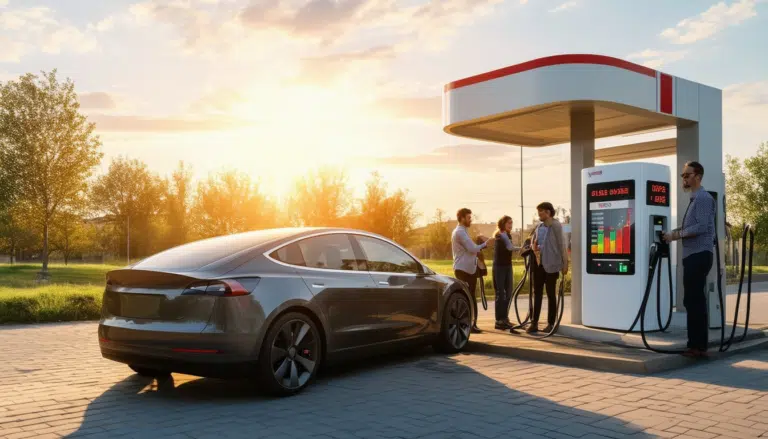The ‘carpooling’ revolution: A new approach to sustainability in transportation

The revolution of ‘carpooling’ is transforming urban mobility dynamics, offering an innovative approach to more sustainable and efficient transportation. By allowing people to share car rides, this practice not only helps to reduce traffic and costs, but also contributes to decreasing carbon emissions. With historical roots dating back to times of scarcity, ‘carpooling’ has adapted to modern needs, driven by technology and a growing environmental awareness. More and more people are recognizing its benefits, making it a viable and attractive alternative for current mobility.
The revolution of ‘carpooling’ is positioning itself as an innovative and sustainable approach to urban transportation. This practice, which involves sharing car rides with others who have similar destinations, not only offers economic and time advantages, but also plays a fundamental role in reducing the carbon footprint and traffic congestion. As environmental awareness grows, ‘carpooling’ becomes a viable solution to promote a more responsible and eco-friendly lifestyle.
Concept and benefits of ‘carpooling’
‘Carpooling’, also known as ride sharing, refers to the organization of trips in private vehicles among several people who share the same destination. This model not only allows for a reduction in costs by sharing fuel and toll expenses, but also eases the burden of traffic, facilitating smoother transit. Moreover, by decreasing the number of vehicles on the road, it contributes to the reduction of carbon dioxide emissions.
History and evolution of carpooling
‘Carpooling’ has its origins in the 1940s, during World War II, when the scarcity of resources such as gasoline and tires led people to share rides as an efficiency measure. Over time, and with the advancement of technology, this practice has evolved and adapted to current needs, becoming a popular alternative that allows movement toward a more sustainable future.
Technology and carpooling platforms
The role of technology in the growth of ‘carpooling’ is undeniable. Mobile applications and digital platforms have facilitated the connection between drivers and passengers willing to share trips. These tools not only allow for efficient trip planning, but also promote a safe environment by incorporating user verification systems and payment management. Examples like BlaBlaCar and Hoop Carpool have become leaders in this field, contributing to the expansion of ‘carpooling’ globally.
Challenges to overcome
Although ‘carpooling’ presents multiple advantages, it also faces significant challenges. Coordination among users can be complex, especially when trying to align schedules and compatible routes. Additionally, ensuring trust and safety among participants is crucial. Linking to the need for infrastructure, it is vital to have systems that facilitate the organization of trips and ensure a comfortable and reliable experience.
Impact on sustainable mobility
‘Carpooling’ has a direct positive impact on sustainable mobility. Initiatives such as ‘Las Rozas shares a car’ have demonstrated how significant economic savings and considerable reductions in carbon emissions can be achieved through the practice of carpooling. This type of collaboration shows the transformative potential of sharing resources in the fight against climate change and the promotion of more sustainable transportation mechanisms.
Future of carpooling
The future of ‘carpooling’ looks promising, with increasing trends toward more responsible use of transportation and greater environmental awareness. The integration of advanced technologies, such as intelligent routing algorithms and connectivity with public transportation systems, is expected to make ‘carpooling’ even more accessible and attractive for everyone. As the community continues to grow, it will solidify as a main option in urban mobility.
The practice of ‘carpooling’ has emerged as a lifestyle that not only transforms urban mobility but also contributes significantly to sustainability. By sharing rides, people actively participate in reducing traffic congestion and decreasing carbon emissions. This alternative presents itself as a practical and accessible solution in the context of growing environmental awareness.
Carpooling offers benefits both individually and socially. From economic savings by sharing fuel and toll costs, to strengthening communities through social interaction. Furthermore, digital platforms have facilitated the way people find compatible travel companions, making the process simpler and safer. The use of technology has driven the popularity of this practice, allowing for improved mobility in cities and promoting a more responsible lifestyle with the environment.
Facing certain challenges, such as coordinating schedules and trust among users, the future of carpooling is promising. As more individuals and companies adopt this practice, a horizon emerges where sustainable transportation becomes the norm rather than the exception. Collaboration between governments, businesses, and citizens will be key to consolidating carpooling as a pillar in the urban mobility of tomorrow.
In this way, with each shared ride, not only is a cleaner environment contributed to, but a stronger and more connected sense of community is also built. The revolution of ‘carpooling’ is undoubtedly a step toward a more sustainable future in urban transportation.


